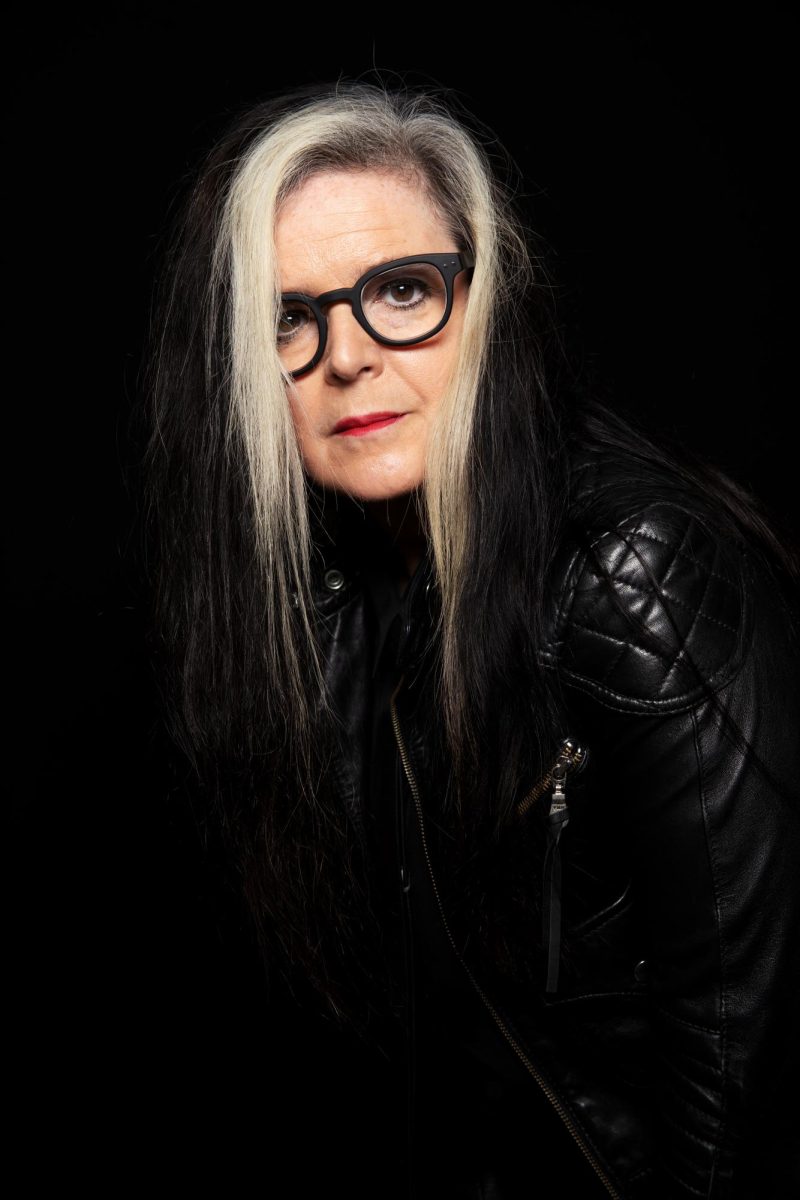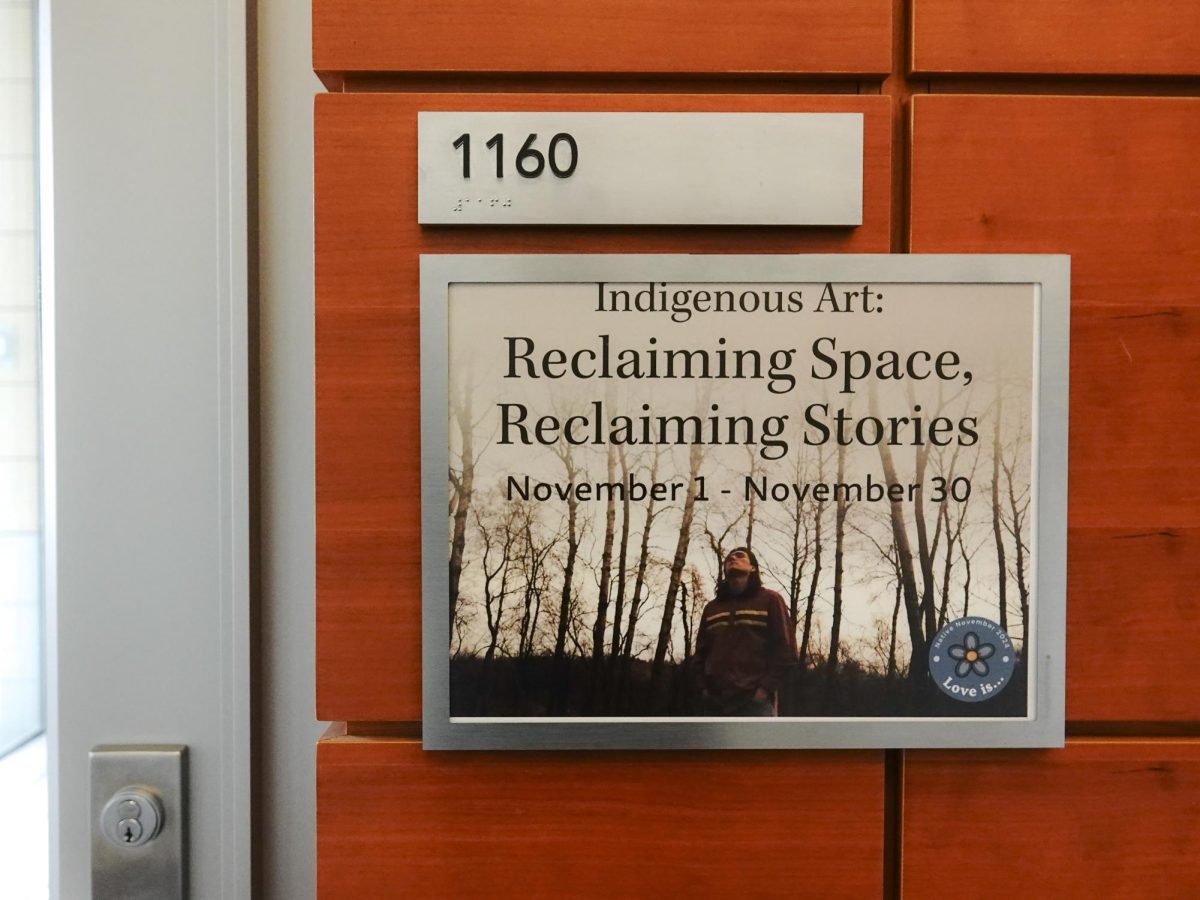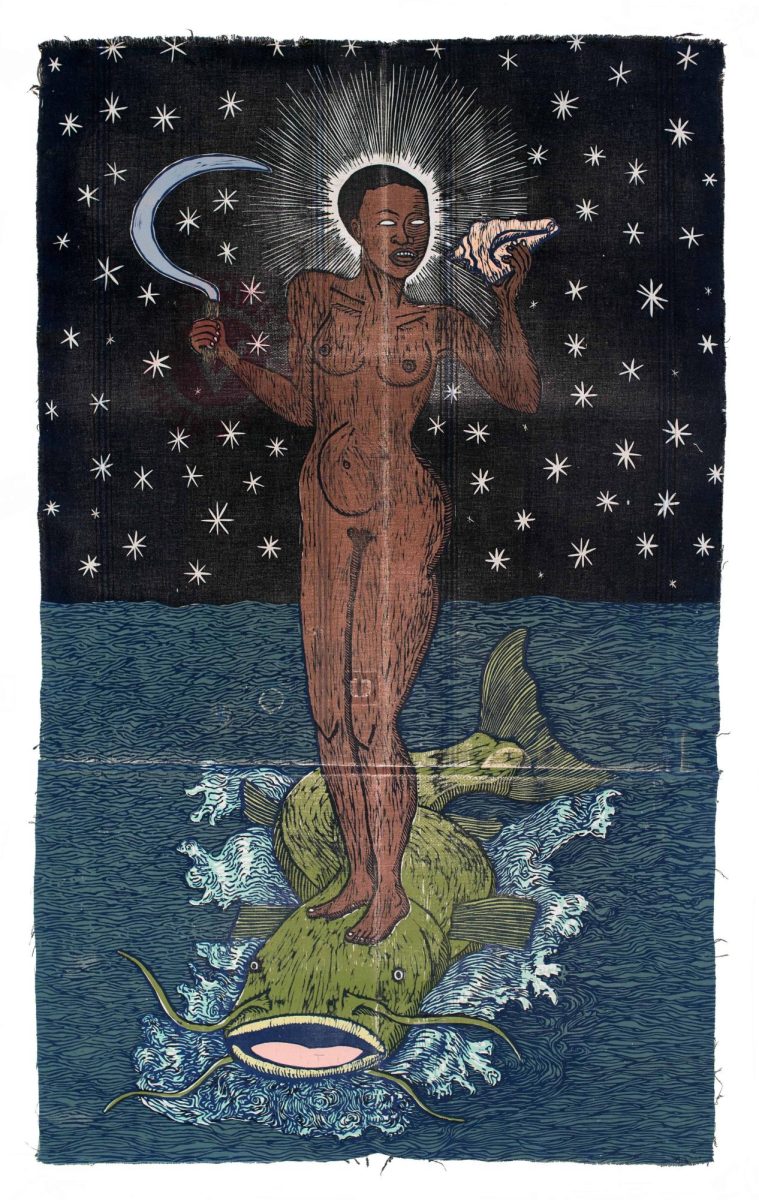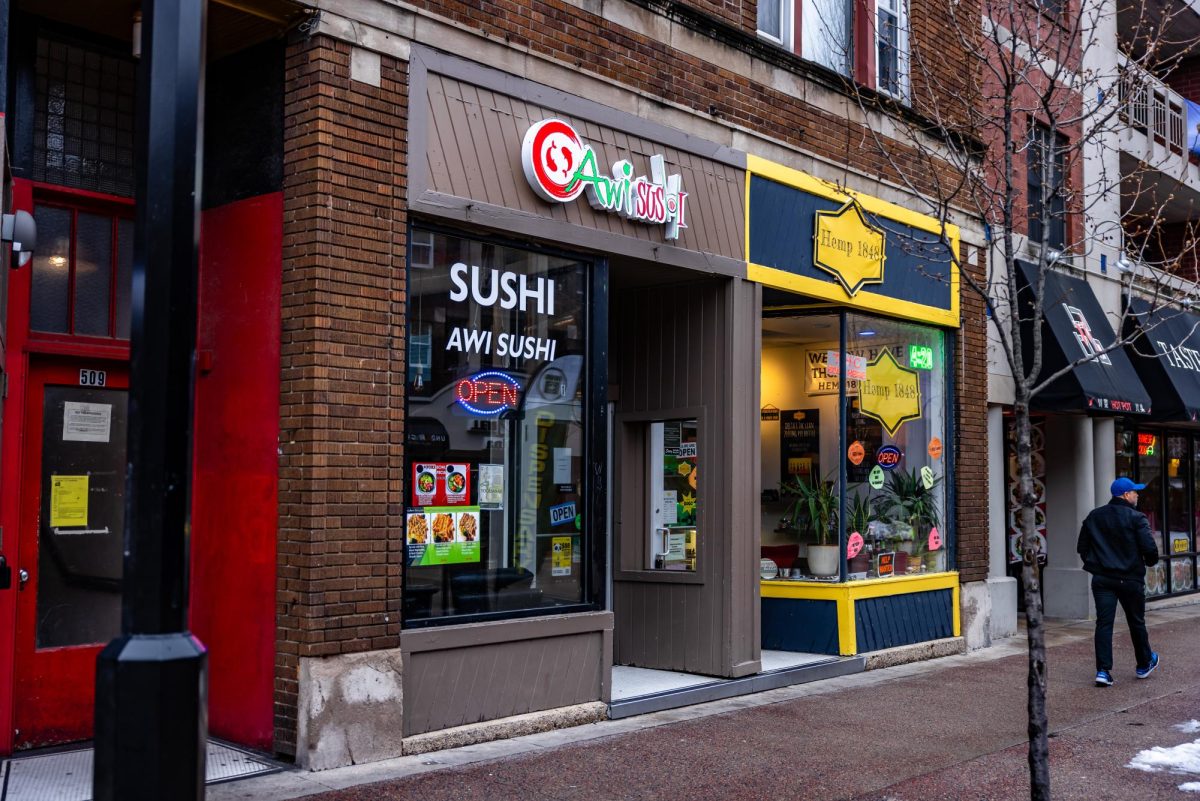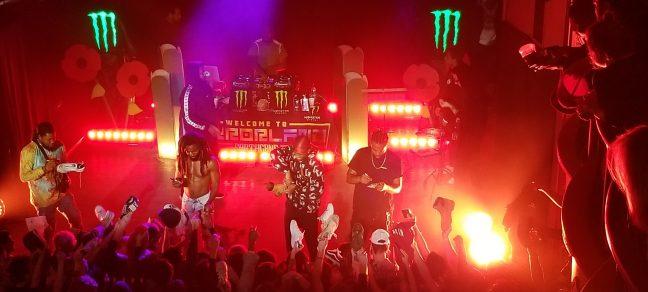
There is garbage on the walls of the gallery. A series of card table-sized prints are screwed along the walls of Union South’s “Gallery 1308.” Desaturated and achromatic, they bring to mind old newspapers matted in a gutter with fall leaves steeping in their orange tea.
Galen Gibson-Cornell, a second year MFA candidate at the University of Wisconsin, developed them by adding and subtracting layers of photographs and street advertisements. His working materials and manipulation of elements elicit a spectrum of emotions, from the foreboding coldness of a concrete society to an organically ephemeral anonymity, rubbed out with bleach and chemicals.
Each layered element is manipulated with color and collage elements. Out of this, he creates an abstract experience of city life, including bus stops, imposing statues and the homeless. His pieces recall the passing of time and forgotten elements of what was – they are a record of nature’s effect on what society feels is disposable material. On another level, a series of pieces hide elements of bright and pastel color, mostly boxes, in these otherwise bleak landscapes – like hidden beauty in an otherwise harsh depressing world. The exhibit, titled “Ruin Pub,” directly and indirectly calls to mind signage boards choked with advertisement of past and upcoming events – something we here in Madison are very familiar with.
His pieces are primarily collected and developed with materials from Europe and Scandinavia, where the articles of these foreign languages dance the line between being completely legible and totally obscured. The organization within each piece suggests they are all portraits in a way, regardless of the presence of a directly living subject – they are portraits of the city.
The pieces as a whole seem intentionally messy and bring to mind an era of ’80s grunge – so rebellious and dirty, backed with a Brat Pack sensibility of, “I just don’t care.” In some cases, he exposes more than half a canvas frame or mounts pieces on grid boards that look like they get along better in the trash. In this way, they are so overtly broken and hopeless it borders on clich?. Some allusions, such as money in the mind of business and silencing the needy, are so directly shown and labeled that it lacks a sense of creativity. Although his torn edges and additive elements often fall outside boxed frames, his social and political statements do not fall outside any box. The subject matter, too, lacks a connectedness in the context of the exhibit as a whole.
The pieces are grouped by threes of similar compositions. From each set, there is no organic flow to the next, leaving a feeling of unexplored potential in this ineloquently organized gallery. The burden of originality often falls on the head of the artist, and unfortunately in this case, it falls short. That, however, should not suggest this show is a complete bust. Albeit thematically overdone, it’s never a bad thing to be reminded of the beauty in others and the beauty in the little things. And there are, of course, worse battle cries than the ones opposing corruption and abuse of power.
This Ruin Pub may need repair, but that’s no reason to not stop in for a quick drink.



